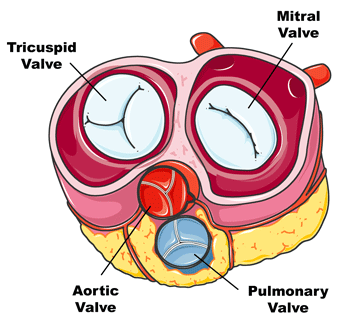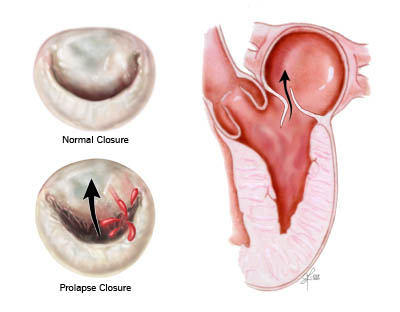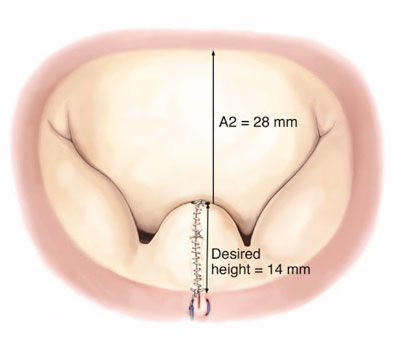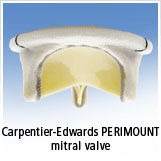Mitral Valve Leaflets: 7 Important Facts to Know
You, or someone you love, may have been diagnosed with a condition concerning your mitral valve - such as mitral regurgitation or mitral stenosis. Often times, these types of heart disease result from poorly functioning mitral valve leaflets.
Patients, their family members and friends often have questions including:
- “What are the mitral leaflets?”
- "What do they do?"
- "What are the risks of poorly functioning leaflets?"
- “Can they be fixed? If so, how?”
To answer those questions and more, I posted 7 important facts about mitral valve leaflets below.
1. The Mitral Valve Has Two Leaflets and One Important Job
Inside your heart, the mitral valve is described by the Mayo Clinic as one of four valves that keep blood flowing in the correct direction. Specifically, the mitral valve controls the blood flow between the left atrium (upper left chamber) and the left ventricle (lower left chamber).

Unlike the other three human heart valves (aortic, pulmonary, and tricuspid) – which have three triangular-shaped leaflets (also called flaps) – the mitral valve has only two tissue leaflets.
The sole purpose of your mitral valve leaflets is to open-and-close tightly during each heartbeat to control blood flow from the atrium to the ventricle. This tight seal ensures that blood flows through the heart - in one direction - with no backflow. Sometimes, however, the valves don't open or close properly, which can cause a disruption of the blood flow through your heart.
2. If Your Leaflets Don’t Seal Tightly, It May Be an Issue
What happens if the mitral valve leaflets don’t fit together?
If your mitral valve leaflets don’t form a tight seal upon closure, it is called mitral valve prolapse (MVP). This is one of the most common forms of heart valve disease.

According to the American Heart Association, approximately 2% of the population has some form of this mitral valve disorder. Some of these valve disorders are congenital, but in other cases, mitral valve disease develops throughout your lifetime.
According to Columbia University Surgery, mitral valve prolapse happens when the mitral valve leaflets and the cords, also known as chordae, supporting the mitral valve weaken. The result is that – with each heart beat – the mitral valve leaflets bulge, or prolapse, back into the heart's left atrium. This can sometimes lead to blood leaking back into the left atrium – a condition called mitral valve regurgitation.
According to the Cleveland Clinic, in most people, mitral valve prolapse isn't life-threatening and doesn't require treatment as most who have it never develop severe regurgitation. If severe regurgitation does occur, symptoms typically appear. The American Heart Association notes that common symptoms include:
- Bursts of rapid heartbeat (palpitations)
- Chest discomfort
- Fatigue
- Shortness of breath
- Swelling of the ankles
3. If Mitral Valve Prolapse Has Caused These Two Conditions, It Requires Treatment
According to the Mayo Clinic, mitral valve prolapse can lead to two potentially serious conditions:
- Mitral valve regurgitation: As I mentioned earlier, if your mitral valve leaflets don't close tightly, blood can leak backwards into your left atrium. If not treated, it can result in heart muscle damage.
- Mitral valve stenosis: The build-up of calcium on your mitral leaflets can cause them to become thick or stiff resulting in a narrowed valve opening and reduced blood flow from the left atrium to the left ventricle.
According to the Mayo Clinic, mitral valve disease can cause other complications, including:
- Irregular heart rhythms in the upper heart chambers (atrial fibrillation or A-Fib)
- High blood pressure that affects the blood vessels in the lungs (pulmonary hypertension)
- Blood clots
- Heart failure
- Stroke
Treatment for mitral valve disease depends on the severity of your condition and whether it’s becoming worse. According to the Cleveland Clinic – in most cases – MVP is simply monitored with regular follow-up visits. In about 10 to 15 percent of people with MVP, however, further treatment is needed.
If you suffer from a severe mitral valve disorder, your heart is at risk for permanent damage or failure. It is incredibly important to monitor mitral valve disease and, if needed, surgically treat it with a mitral valve repair or a mitral valve replacement operation.
4. If You Are Over 50, And A Woman, Be Extra Careful Of Mitral Valve Prolapse (MVP)
According to the Cleveland Clinic, people are often born with mitral valve prolapse – but during their lifetime, the disease can worsen as the anatomical structures of the mitral valve age. The result is that 20% of people over the age of 50 have some form of mitral valve disease.
Mitral valve prolapse can develop in any person at any age and can be seen in children, teens, and adults – both males and females. However, according to the Cleveland Clinic women suffer from this disease twice as much as men. In fact, some studies show mitral valve disease affects 6 percent of all women.
5. Two Distinct Sounds Can Diagnose Your MVP
According to the American Heart Association, mitral valve prolapse is also known as "click-murmur" syndrome. And, according to the Cleveland Clinic, mitral valve prolapse is usually diagnosed during a routine physical exam. That’s because – when listening to your heart with a stethoscope – your doctor may hear two sounds.
The first one is a “clicking” sound: The defective mitral valve leaflet can make a pronounced "click" as it opens and closes.
The second sound is a "whooshing" sound: Blood flows back into the left atrium through the mitral valve because the mitral valve leaflets bow backward into the atrium.
If the click-murmur is detected, your doctor will likely recommended an echocardiogram to get a more comprehensive diagnosis, evaluate your valve cusps, and assess the amount of blood that may be leaking from the valve when your heart beats.
6. Heart Attacks and Rheumatic Can Damage Mitral Valve Leaflets
According to the Mayo Clinic, past issues can cause mitral valve disease. Possible causes of mitral valve regurgitation include:
- Infections such as either Rheumatic fever (a complication of untreated strep throat) which can damage the mitral valve, leading to mitral valve regurgitation or mitral valve stenosis.
- Endocarditis. The mitral valve may be damaged by an infection of the lining of the heart (endocarditis) that can involve heart valves.
- Heart attack. A heart attack can damage the area of the heart muscle that supports the mitral valve, affecting its function.
- Congenital heart defects.
- Use of certain medications. Prolonged use of certain medications such as those containing ergotamine that are used to treat migraines.
- Trauma. Such as in a car accident.
- Atrial fibrillation.
- Untreated high blood pressure. Your heart is forced to work harder, and your heart's left ventricle can enlarge. This can then stretch the tissue around your mitral valve, which can lead to leakage.
7. Mitral Valves Can be Repaired or Replaced
There are two types of treatment available for mitral valve prolapse:
During a mitral valve repair, your mitral valve is reconstructed to ensure proper blood flow through the heart. There are traditional open heart surgery techniques and there are transcatheter approaches for mitral valve repair which do not require an incision to the patient's sternum or ribs.

For example, the MitraClip – available for certain high-risk patients – is an FDA-approved transcatheter mitral valve repair device that “clips” the malfunctioning leaflets together in an effort to prevent mitral regurgitation.
During mitral valve replacement, an open-heart operation usually takes between three to five hours. During procedure, a surgeon removes the diseased mitral valve and replaces it with a mechanical heart valve replacement or a tissue heart valve replacement. Below is a picture of a mitral valve replacement that has leaflets made from the pericardial sac of a cow.

Transcatheter Mitral Valve Replacement (TMVR) devices are also now in feasibility studies and clinical trials. These TMVR procedures do not require an incision to the patient's chest or sternum. Patients do not need to be on the heart-lung machine during TMVR. And, in some cases, patients are not required to be on general anesthesia.
Below is a picture of the Tendyne TMVR device that is currently in clinical trials.

So you know... Mitral valve repair is often referred to as the “gold standard” for treating mitral valve disease including mitral regurgitation and mitral valve prolapse. However, there are patient situations such as a severe infection or severe calcification on the mitral leaflets that requires a mitral valve replacement.
According to Columbia University Surgery, it is nearly 100% that a leaking mitral valve can be successfully repaired. After mitral valve repair, 95% of patients are free of re-operation at 10 years, and this statistic is similar at 20 years.
In addition, the Mitral Valve Repair Center at The Mount Sinai Hospital has greater than a 99% mitral valve repair rate.
I hope these 7 facts about mitral valve leaflets helped you!!!
Keep Learning About Mitral Valve Disease
Here is more educational information to educate and empower you!
- Mitral Valve Repair: What Should Patients Know?
- Free Patient eBook: Advances in Mitral Valve Repair
- Patient Video: Why Did Janet Want a Mitral Valve Repair?
- TMVR Patient Success Story: Orest Kozinczuk from Illinois
- Mitral Leaflet Anatomy: Pictures & Diagrams
- Meet Mitral Valve Patients in Our Community!
Page last updated: September 18, 2020
References:
Mayo Clinic: https://www.mayoclinic.org/diseases-conditions/mitral-valve-disease/symptoms-causes/syc-20355107 and https://www.mayoclinic.org/diseases-conditions/mitral-valve-regurgitation/symptoms-causes/syc-20350178
Columbia Surgery: http://columbiasurgery.org/heart/mitral-regurgitation
Cleveland Clinic: https://my.clevelandclinic.org/health/diseases/17241-mitral-valve-prolapse
American Heart Association: https://www.heart.org/en/health-topics/heart-valve-problems-and-disease/heart-valve-problems-and-causes/problem-mitral-valve-prolapse




